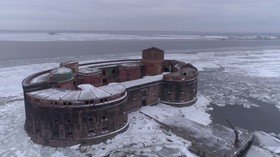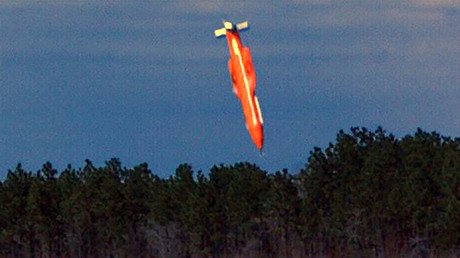DRONE FOOTAGE captures eerie Tsars’ PLAGUE FORT in the middle of Gulf of Finland

Welcome to Fort Alexander, a former Russian island fort that also served as a laboratory for plague and other infections, gorgeously captured in this aerial footage.
Named after the Russian Emperor Alexander I, the ruler of Russia during Napoleon’s disastrous winter campaign, the fort is one of several erected in the Gulf of Finland in the mid-19th century. The fortifications were meant to defend the island port Kronstadt and by extension St. Petersburg, Russia’s then-capital located on the mainland to the east.
In the late 19th century an outdated Fort Alexander was repurposed for research of infectious diseases. Its isolated location on a tiny islet with a single pier was deemed quite fit for the role, as it allowed to contain a possible outbreak. And indeed, four medics contracted the plague on two separate occasions, and half of them died, but the disease did not spread. Still, the name “Fort Plague” stuck to the site.

Watch the video to see the majestic if somewhat battered and snowy stronghold. And maybe come to visit when you are in St. Petersburg next time. It’s completely plague-free now, we promise.
Subscribe to RT newsletter to get stories the mainstream media won’t tell you.














